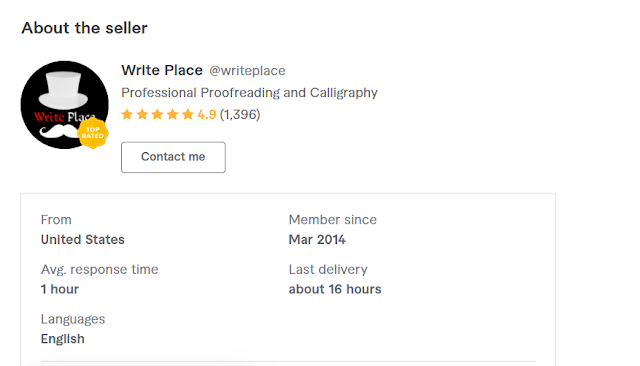Top 3 Best Calligraphy Art: Embracing the Beauty of Arabic Calligraphy
Are you fascinated by the elegance and artistic flair of calligraphy? If so, you're in for a treat as we delve into the world of Arabic calligraphy. In this article, we will explore the top three best calligraphy art pieces that showcase the mesmerizing beauty and rich cultural heritage of Arabic script. So grab your pen and paper as we embark on this artistic journey.
link1// click here
1. Introduction: Unveiling the Artistry of Arabic Calligraphy
Calligraphy, the art of beautiful writing, has been cherished and revered for centuries. Among the various calligraphic traditions, Arabic calligraphy stands out as a testament to the richness of Islamic culture and the aesthetic beauty of the Arabic script. Its intricate designs, flowing curves, and precise strokes make Arabic calligraphy a sight to behold.
2. The Rich History and Significance of Arabic Calligraphy
Arabic calligraphy has a deep-rooted history that dates back to the 7th century when Islam emerged. The Quran, the holy book of Islam, played a pivotal role in the development of Arabic calligraphy. Islamic scholars and artisans dedicated themselves to preserving the integrity of the written word by transforming it into an art form. The significance of Arabic calligraphy extends beyond its artistic appeal; it is also a means to convey the divine message and foster spiritual connection.
3. Calligraphy Tools: Essential Instruments for Mastery
To create stunning Arabic calligraphy, skilled artists employ a range of traditional tools. These tools include the qalam (reed pen), ink, paper, and a wooden board. The qalam, with its fine point and flexible nature, allows the calligrapher to achieve the delicate curves and intricate details characteristic of Arabic script.
4. Top 3 Best Calligraphy Art Pieces
Artwork 1: "Majestic Harmony"
In this breathtaking piece, "Majestic Harmony," the calligrapher masterfully intertwines Arabic letters to create a sense of balance and harmony. The flowing script gracefully dances across the canvas, evoking a profound sense of tranquility. The choice of color palette enhances the overall aesthetic appeal, making it a true masterpiece of Arabic calligraphy.
Artwork 2: "Eternal Splendor"
"Eternal Splendor" captivates viewers with its grandeur and opulence. The calligraphic composition exudes a regal aura, with each stroke exquisitely crafted to manifest a sense of eternal beauty. The meticulous attention to detail and skillful arrangement of Arabic letters make this artwork an epitome of artistic brilliance.
Artwork 3: "Celestial Elegance"
"Celestial Elegance" enchants with its ethereal beauty and delicate intricacy. The calligrapher's deft hand brings to life a composition that is both celestial and serene. The graceful curves and the rhythmic flow of the script draw the viewer into a realm of profound tranquility and inner reflection.
5. Techniques and Styles: A Kaleidoscope of Creativity
Arabic calligraphy encompasses various techniques and styles, each with its unique characteristics. Let's explore three prominent styles:
Naskh: The Timeless Classic
Naskh is one of the oldest and most widely recognized calligraphic styles. Known for its legibility and simplicity, it features clear, rounded letterforms. Naskh is often used in the transcription of the Quran and other important manuscripts.
Thuluth: Bold and Majestic
Thuluth is a majestic script characterized by its elongated verticals and sweeping curves. It is commonly found in architectural inscriptions, official documents, and decorative arts. Thuluth demands precision and mastery to achieve its distinctive elegance.
Diwani: Graceful Curves and Flourishes
Diwani is a cursive script that showcases extravagant flourishes and interconnected letters. It originated in the Ottoman Empire and gained popularity as a script for official documents, royal decrees, and monumental inscriptions. Diwani's flowing nature allows calligraphers to experiment with elaborate designs.
6. The Beauty of Arabic Calligraphy in Modern Applications
While deeply rooted in tradition, Arabic calligraphy continues to evolve and find new expressions in the modern world. Its timeless appeal has transcended traditional boundaries, finding its way into various art forms, fashion, interior design, and digital media. Artists and designers worldwide are captivated by the allure of Arabic calligraphy, incorporating its grace and elegance into contemporary creations.
7. Unleash Your Inner Calligrapher: Tips for Beginners
Are you inspired to explore the art of Arabic calligraphy? Here are a few tips to get you started on your calligraphic journey:
Start with the basics: Familiarize yourself with the different scripts and styles of Arabic calligraphy.
Master the strokes: Practice fundamental strokes to develop precision and control.
Embrace patience: Calligraphy requires time and dedication. Be patient with yourself and allow yourself to make mistakes along the way.
Seek guidance: Join calligraphy classes or seek guidance from experienced calligraphers to refine your skills.
Practice consistently: Regular practice is key to honing your calligraphic abilities.
8. Embracing the Art: Exhibitions and Museums
Immerse yourself in the captivating world of Arabic calligraphy by visiting exhibitions and museums dedicated to this art form. These cultural institutions offer a glimpse into the rich heritage of Arabic calligraphy, showcasing historical artifacts, masterpieces, and contemporary interpretations. The experience will deepen your appreciation for this extraordinary art form.
link1// click here
9. Conclusion
Arabic calligraphy is a testament to the enduring beauty and cultural significance of the written word. Its mesmerizing elegance, steeped in history and spirituality, continues to captivate enthusiasts and artists worldwide. Whether you're an admirer or an aspiring calligrapher, Arabic calligraphy offers a world of boundless creativity and artistic expression.
FAQs
Can anyone learn Arabic calligraphy?
Absolutely! Arabic calligraphy is open to anyone interested in learning this beautiful art form. With dedication and practice, anyone can develop their calligraphic skills.
What materials do I need to start practicing Arabic calligraphy?
To get started, you will need a reed pen (qalam), ink, paper, and a wooden board. These basic materials will allow you to begin practicing the fundamental strokes and letterforms.
How long does it take to become proficient in Arabic calligraphy?
Becoming proficient in Arabic calligraphy requires consistent practice over an extended period. It may take months or even years to master different scripts and develop a personal style.
Are there different styles of Arabic calligraphy?
Yes, Arabic calligraphy encompasses various styles, including Naskh, Thuluth, Diwani, and many more. Each style has its unique characteristics and historical significance.
Can I use Arabic calligraphy in modern designs and applications?
Absolutely! Arabic calligraphy has found its place in contemporary designs, fashion, interior decor, and digital media. Its timeless appeal adds a touch of elegance and cultural richness to modern creations.
So, what are you waiting for? Unleash your creativity and immerse yourself in the captivating world of Arabic calligraphy. Discover the harmony of "Majestic Harmony," the splendor of "Eternal Splendor," and the elegance of "Celestial Elegance." Embrace this art form and let your creativity flow as gracefully as the strokes of an expert calligrapher.
.png)















